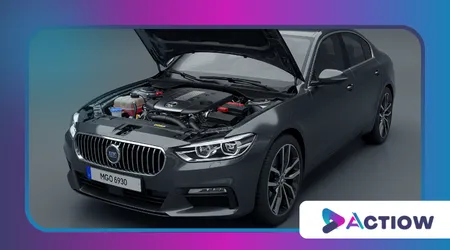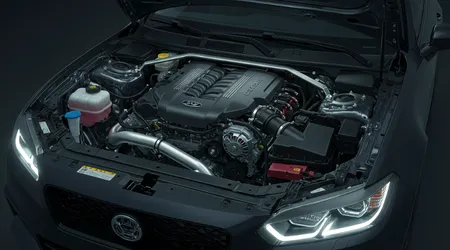The Evolution of Engines: From Early Models to Hybrids

Anúncios
The evolution of engines has been one of humanity’s most transformative technological journeys, reshaping transportation, industry, and even global economies.
From the rudimentary steam-powered contraptions of the 18th century to today’s ultra-efficient hybrid systems, each breakthrough has pushed boundaries in power, efficiency, and sustainability.
But how did we get here? And what does the future hold?
Anúncios
This deep dive explores key milestones in the evolution of engines, analyzing how innovation, necessity, and environmental awareness have driven progress.
We’ll examine early breakthroughs, the golden age of internal combustion, and the disruptive rise of electrification all while keeping an eye on what’s next.
The journey of engine technology illustrates not just advancements in mechanics but also the societal shifts that accompany them.
As we explore these developments, we will see how each innovation has influenced everyday life, from personal transportation to global trade.
1. The Birth of Mechanical Power: Steam and Beyond
Long before gasoline dominated, steam engines laid the foundation for the evolution of engines.
Inventors like Thomas Newcomen and James Watt pioneered machines that converted heat into motion, fueling the Industrial Revolution.
These bulky, inefficient systems were far from perfect, but they proved that mechanical power could replace human and animal labor.
By the mid-1800s, steam locomotives and ships revolutionized travel and trade.
Yet, limitations were clear: boilers were dangerous, fuel consumption was excessive, and mobility was restricted.
The world needed something better and the answer arrived with internal combustion.
Steam engines also paved the way for advancements in metallurgy and engineering, leading to lighter and more efficient designs.
The impact of steam power extended beyond transportation, influencing industries such as mining, agriculture, and manufacturing.
+ The History of Ferrari: How the Brand Became an Automotive Icon
2. Internal Combustion Takes Over (Late 19th to 20th Century)

The late 1800s saw the rise of gasoline and diesel engines, marking a pivotal shift in the evolution of engines.
Nikolaus Otto’s four-stroke design (1876) became the blueprint for modern powerplants, while Rudolf Diesel’s compression-ignition engine offered unmatched efficiency for heavy-duty applications.
Key Innovations in This Era:
- Mass Production (Ford Model T, 1908): Henry Ford’s assembly line made cars affordable, accelerating global adoption.
- Turbocharging (1962): General Motors introduced turbocharged engines, boosting power without increasing displacement.
- Electronic Fuel Injection (1980s): Replaced carburetors, improving efficiency and emissions.
By the 20th century, internal combustion engines (ICE) dominated roads, skies, and seas.
But their environmental impact soon sparked scrutiny.
As urbanization increased, so did air pollution, leading to public outcry and regulatory responses.
The internal combustion engine era also saw the rise of motorsports, further popularizing automotive culture and pushing technological boundaries.
3. The Environmental Awakening and Efficiency Gains
As climate concerns grew, so did demands for cleaner engines.
Stricter emissions laws (like the U.S. Clean Air Act) forced automakers to innovate.
Catalytic converters (1975), variable valve timing (Honda VTEC, 1989), and lightweight materials improved efficiency without sacrificing performance.
Table 1: Emissions Reduction in Modern Engines (EPA Data)
| Era | CO2 Emissions (g/mile) | Key Technology |
|---|---|---|
| 1970s | 650 | Basic Catalytic Converters |
| 2000s | 400 | Direct Injection, Hybrids |
| 2020s | 250 | Turbo Hybrids, EVs |
Despite these strides, ICEs faced an existential challenge: could they ever be truly sustainable?
The push for cleaner technology led to significant research and development, resulting in breakthroughs that have shaped modern engines.
Consumer awareness of environmental issues has also influenced purchasing decisions, prompting manufacturers to prioritize eco-friendly options.
For further insights into emissions and automotive technology, visit EPA’s Vehicle Emissions.
4. Hybrids: The Bridge to Electrification
The 21st century introduced hybrids, a crucial phase in the evolution of engines.
Toyota’s Prius (1997) proved that combining gasoline and electric power could slash emissions while maintaining range.
Soon, plug-in hybrids (PHEVs) and mild hybrids offered varying levels of electrification.
Why Hybrids Matter:
- Regenerative Braking: Recaptures energy normally lost as heat.
- Engine Downsizing: Smaller ICEs paired with electric motors deliver equal power with less fuel.
- Transition Role: They ease consumers into full electrification.
Hybrids have also played a significant role in changing public perception about electric vehicles, demonstrating their viability and efficiency.
The technology behind hybrids has influenced the design of fully electric vehicles, as many principles are shared.
As manufacturers continue to innovate, hybrids serve as a bridge, helping consumers adjust to the future of transportation.

5. The Electric Revolution and Beyond
Electric vehicles (EVs) represent the latest leap in the evolution of engines.
With zero tailpipe emissions and instant torque, they’re redefining performance.
Tesla’s rise, solid-state batteries, and hydrogen fuel cells hint at a post-combustion future.
Table 2: ICE vs. Hybrid vs. EV Efficiency Comparison
| Engine Type | Energy Efficiency (%) | Range (Miles) | Refueling Time |
|---|---|---|---|
| Gasoline ICE | 20-30% | 300-400 | 5 min |
| Hybrid | 30-40% | 500-600 | 5 min + charging |
| Full EV | 80-90% | 250-350 | 30 min (fast charge) |
However, challenges like charging infrastructure and battery recycling remain.
The rapid development of charging networks is crucial for the widespread adoption of EVs, ensuring convenience for consumers.
As battery technology advances, we can expect improvements in range and charging times, addressing some of the current limitations.
++ 10 Rarest Cars in the World: Vehicles Worth Millions
6. What’s Next? Hydrogen, Synthetic Fuels, and AI Optimization
The next chapter in the evolution of engines may abandon pistons altogether.
Hydrogen combustion and e-fuels promise carbon-neutral alternatives, while AI-driven engine management maximizes efficiency in real-time.
Future Trends to Watch:
- Hydrogen Combustion: Toyota’s hydrogen-powered Corolla races in endurance events, proving its viability.
- AI Tuning: Machine learning optimizes fuel maps for peak performance.
- 3D-Printed Engines: Lightweight, custom designs could redefine manufacturing.
These innovations could revolutionize not only engine design but also the entire automotive manufacturing process.
As the industry pivots towards sustainability, the integration of advanced technologies will play a critical role in shaping future vehicles.
With ongoing research and development, the possibilities for the next generation of engines are virtually limitless.
Conclusion: A Never-Ending Race for Innovation
The evolution of engines is far from over.
Each era has brought smarter, cleaner, and more powerful solutions and the pace is only accelerating.
Whether through hybrids, EVs, or futuristic hydrogen tech, one thing is certain: the engines of tomorrow will bear little resemblance to their ancestors.
As consumers and policymakers push for sustainability, automakers must balance performance, affordability, and environmental responsibility.
The road ahead is uncertain, but if history is any indicator, ingenuity will always find a way.
The journey of engine technology will continue to shape not only how we travel but also how we interact with our environment.
